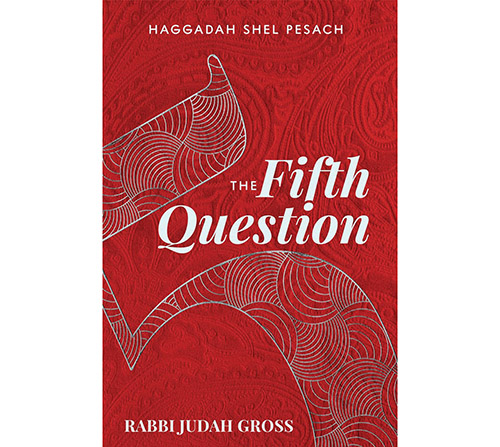


Passaic is a special community, such that three of my friends have come out with their own versions of the Pesach Haggadah this year. So with a little help from my friends and their Haggadahs, I’ll be having a more interesting Pesach in 2019.
If there was an award for most unique Haggadah, that would certainly go to “The Emoji Haggadah” by Martin Bodek (Ktav). An emoji is a graphic symbol that represents an idea or concept. From smiley faces to coats, animal and more, there are thousands of emojis in use.
In his Haggadah, Bodek uses emojis to replace the words. The job of the reader is to translate those emojis back into their native language. It’s a cute concept and an interesting approach to pique the interest of someone who may not be so attracted to a traditional Haggadah. While this Haggadah is likely best for the under-35 crowd, it could also be a great way for grandchildren to interact with their older, and often emoji-oblivious, grandparents. For those involved in Jewish outreach, “The Emoji Haggadah” could be quite effective in creating a non-threatening approach to the Passover experience.
One of the children mentioned in the Haggadah is the one who does not know how to ask a question. At the Seder, try using “The Emoji Haggadah” and you may find out they do indeed know who to ask. It’s just a matter of finding the right approach to use, and for some, “The Emoji Haggadah” could be that approach.
While there are no emojis in “The Fifth Question” (Mosaica Press), the approach Rabbi Judah Gross uses is to place a strong emphasis on the text of the Haggadah. Gross details many penetrating and creative questions in this insightful Haggadah. With many questions, he often leaves it up to the reader to come up with their own answer.
Passover is perhaps the most emblematic holiday where family is at the center. As an example, the Four Questions are meant to be an interactive device to start a conversation between the father and his children. With that, it was quite touching for me to see the author’s father write the forward with a letter of blessing.
Gross places an emphasis on word usage, phraseology, verbiage and takes a nuanced look at the specific language and words used in the Haggadah. He also places an emphasis on coming up with creative additions to your own Passover Seder. Gross writes that there is plenty of room for creativity at the Seder, and doing that, is a great method to enhance the Seder for everyone there.
Rabbi Herschel Schacter may be the main expounder of the teachings of Rabbi Soloveitchik. With that, my friend Dr. Allan Weissman may be the main expounder of the teachings of Rabbi Schacter. In “Rav Schachter on The Haggadah” (Feldheim), Weissman has done an astonishingly good job and takes a similar approach to his previous works of “Rav Schachter on the Parsha” and “Rav Schachter on the Moadim” in capturing the brilliance of Rav Schachter and bringing that to writing.
Weismann has adapted teachings from Rav Schachter based on his previous works and shiurim of the last few decades. Quoting extensively from his shiurim and published works such as “Nefesh HaRav,” “Divrei Harav,” “MiPninei HaRav,” yahrzeit shiurim from the Rav and more, Weismann has crafted a remarkable work of depth and breadth that brings the teachings of Rav Schachter and Rabbi Soloveitchik to an English-speaking audience.
Weissman starts with an overview of some of the topics related to the preparation for Pesach. He details topics such as the acceptability of selling chametz, checking for chametz, details around the various foods on the Seder plate and much more.
Once the text of the Haggadah starts, he details in true Brisker style a deep and sharp analysis of the text of the Haggadah and the specific requirements for each of the 14 parts of the Pesach Seder.
Each year there are many new Haggadahs on the market. Woefully, many of them do not have a lot of added text, rather 10-20 pages of insights. This book does not suffer that fate as there is over 200 pages of Haggadah insights.
The purpose of writing “Rav Schachter on The Haggadah” was to spread the influence of Rav Schachter’s sweet words to those who have not yet tasted them. For those who have tasted them here, they’ll certainly be pining for “Rav Schachter on The Haggadah, Volume 2.”
With all of the new Haggadahs being printed, the choices can often be overwhelming. There are certainly more than four questions to ask when choosing which Haggadah to use. The three Haggadahs here are new and unique, and each of them is certain to invigorate your Pesach Seder.
By Ben Rothke
Ben Rothke lives in New Jersey and works in the information security field. He reviews books on religion, technology and science.









